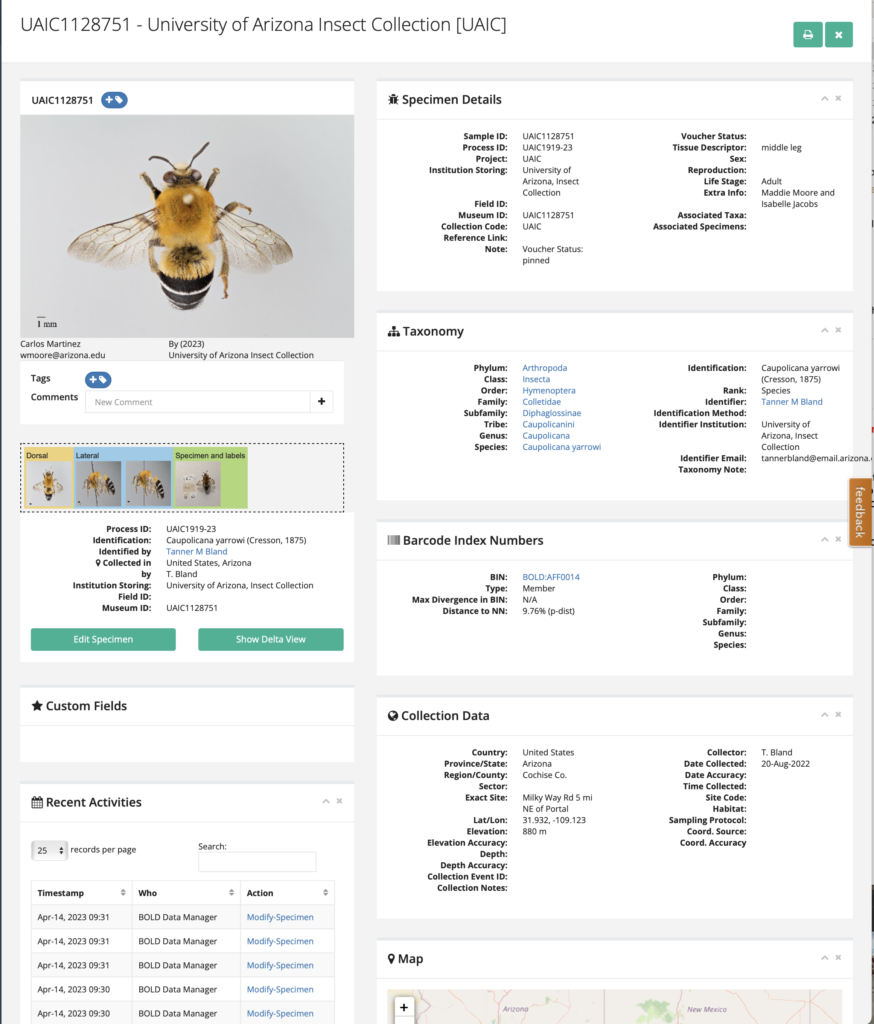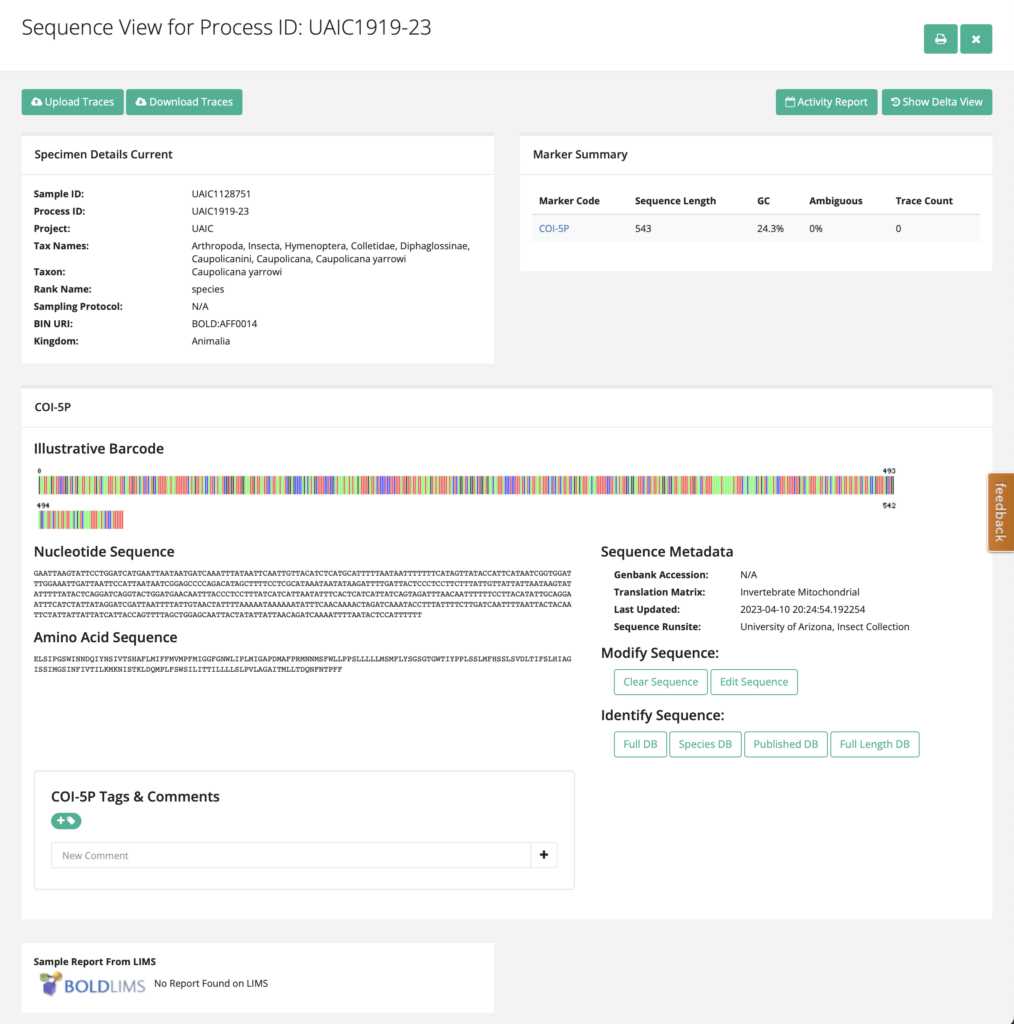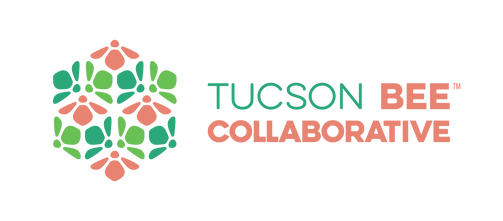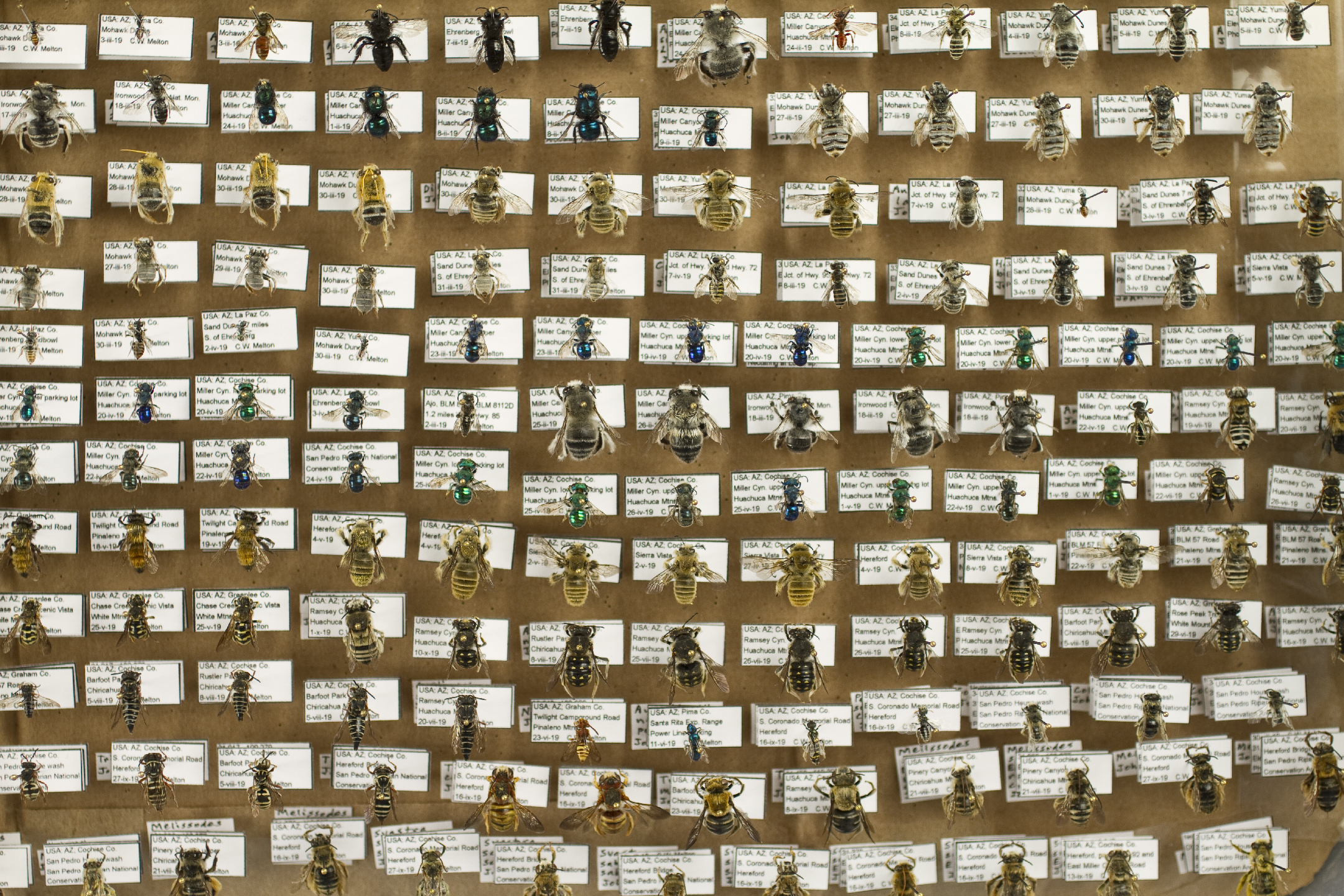
The University of Arizona Insect Collection (UAIC) includes thousands of native bee specimens, representing 5 families (Andrenidae, Apidae, Colletidae, Halicitidae, and Megachilidae), 65 genera, and approximately 520 species. Many more species await discovery as we focus our energy on re-curating the native bee collection, processing our unidentified material, and targeting new specimen acquisitions. The collection itself and associated identification tools we are building will help researchers to understand and monitor the health of native bees of the Sonoran Desert Region.
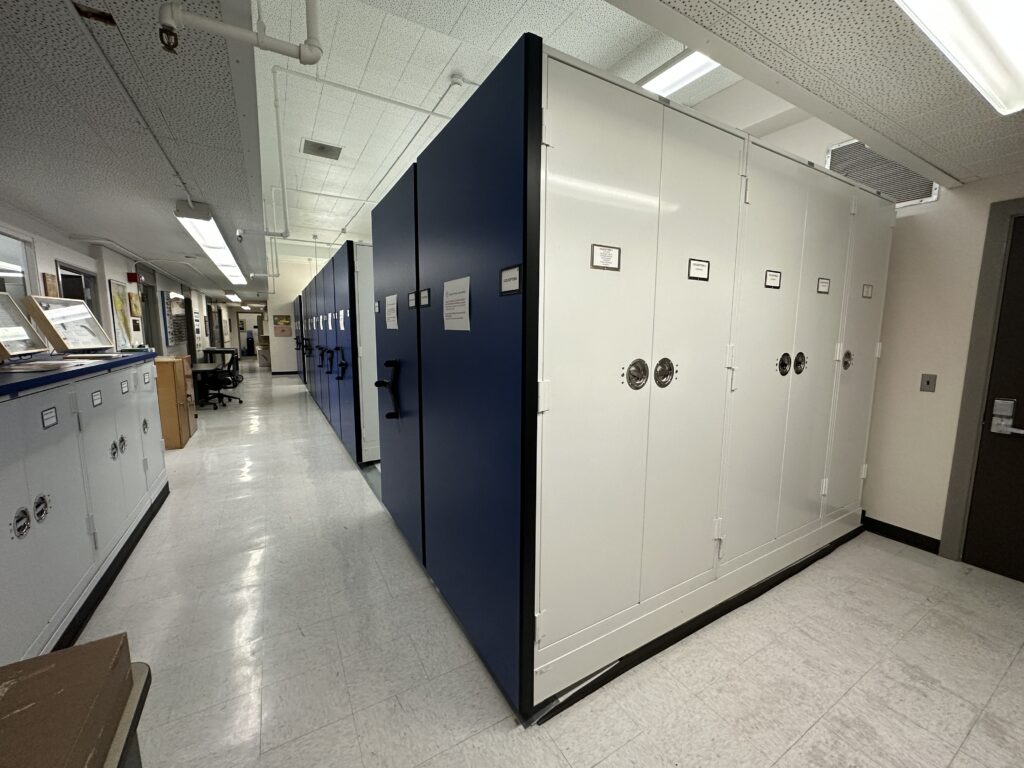
Above is a view of the main cabinet aisle of the UAIC. The cabinets slide on rollers to allow access to the specimen drawers. On the right is UAIC curator Wendy Moore standing between two cabinets with several trays pulled partially out. She’s holding one of the education demonstration trays, which are housed in the regular specimen cabinets. The collection space is in the process of being expanded into another room with stationary cabinets. That will increase storage space by about 50%. Below is a drawer with examples of Arizona native bees.
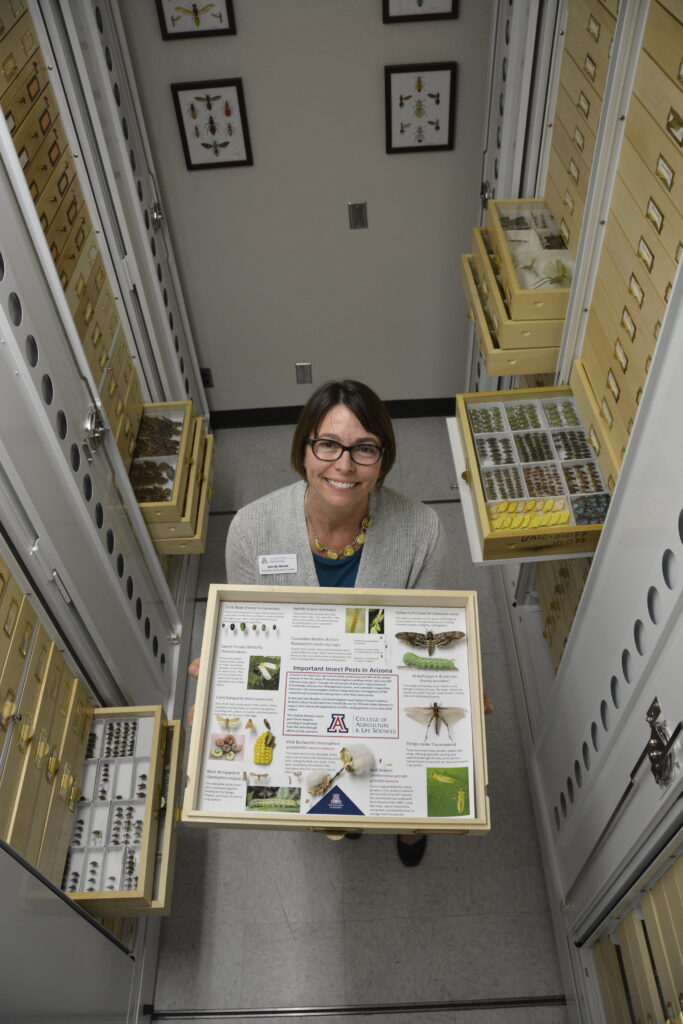
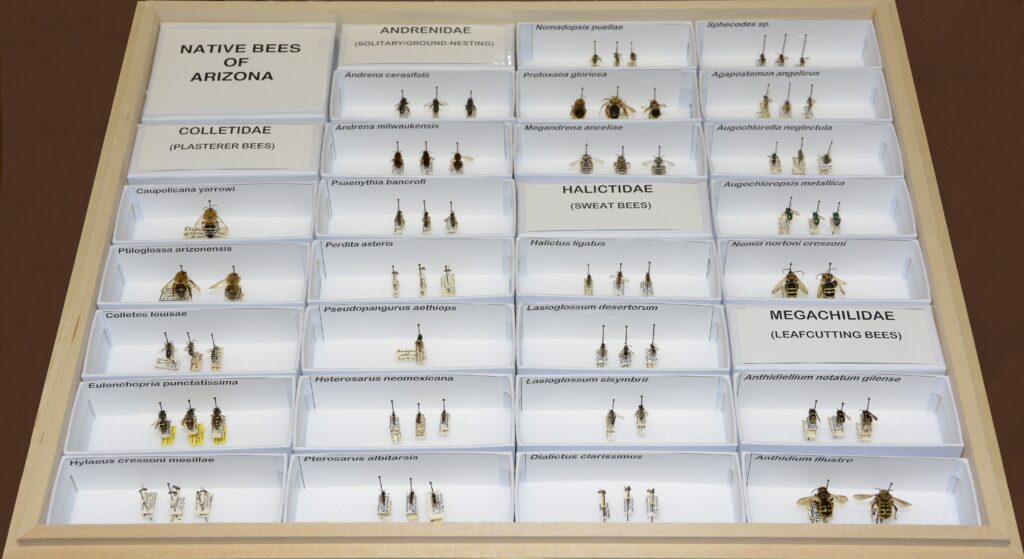
The UAIC is providing specimens, data, and images for TBC’s work with the locals.
Digitization
The UAIC is home to 100,000+ native bee specimens collected in Arizona. When specimens are curated, they are given labels that contain information about where it was collected, what plant it was associated with, and an expert identification of the species. This collection of information is what differentiates a “bug on a stick” from a research worthy specimen. This data is important for understanding the habitat and range of native bees, the season when they are active, and the flowers they pollinate and rely on for nectar. The difficulty is how to obtain this information when it is stuck to a pin, in a box with a thousand other specimens, and in a collection of a million more. Student workers at the University of Arizona have been diligently digitizing the bee specimens at the UAIC over the course of several years. The digitization process involves the careful removal of the specimen’s labels to be arranged next to the bee and photographed using a special camera. The student adds one more very important label; a unique UAIC catalog number that will be the anchor for all information and records associated with that specimen. From this photo, the information on the labels can be written down and entered into a database. The UAIC has digitized over 130,000 specimens,
Collaborations with researchers
DNA Barcoding
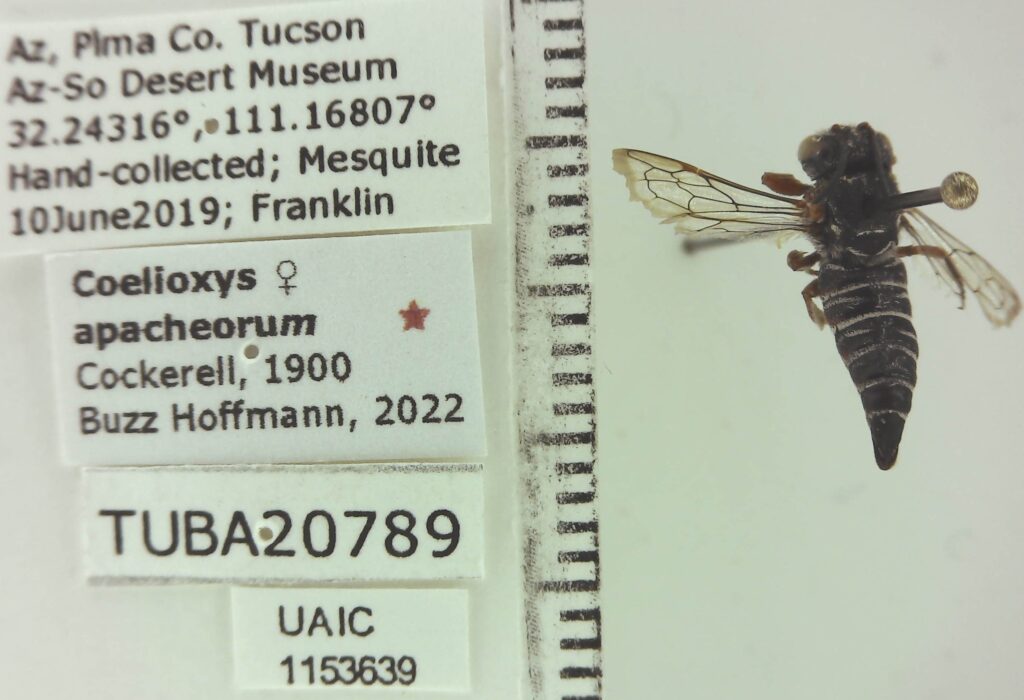
Above is an example of the medium resolution photos of pinned collection specimens, with their associated data tags slipped off the pin and arranged beside the specimen. To the right is an Internet usable 2.7 MB JPEG derived from a 235.5 MB high resolution TIF file. A leg was removed from this specimen for DNA barcoding after this photo was taken.
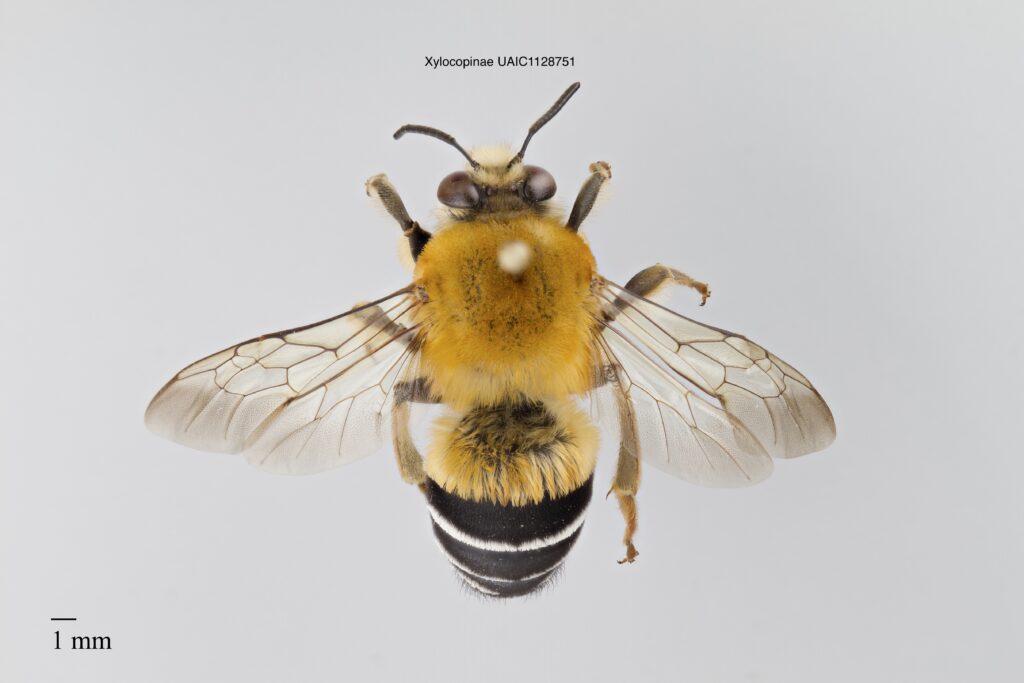
The UAIC and the associated Moore Lab provide resources for DNA barcoding of specimens used in the Course-based Undergraduate Research Experience taught by TBC members at Pima Community College and the University of Arizona. The specimen data and barcoding results are uploaded to the Barcode of Life Data System for analysis. Here’s an example.
